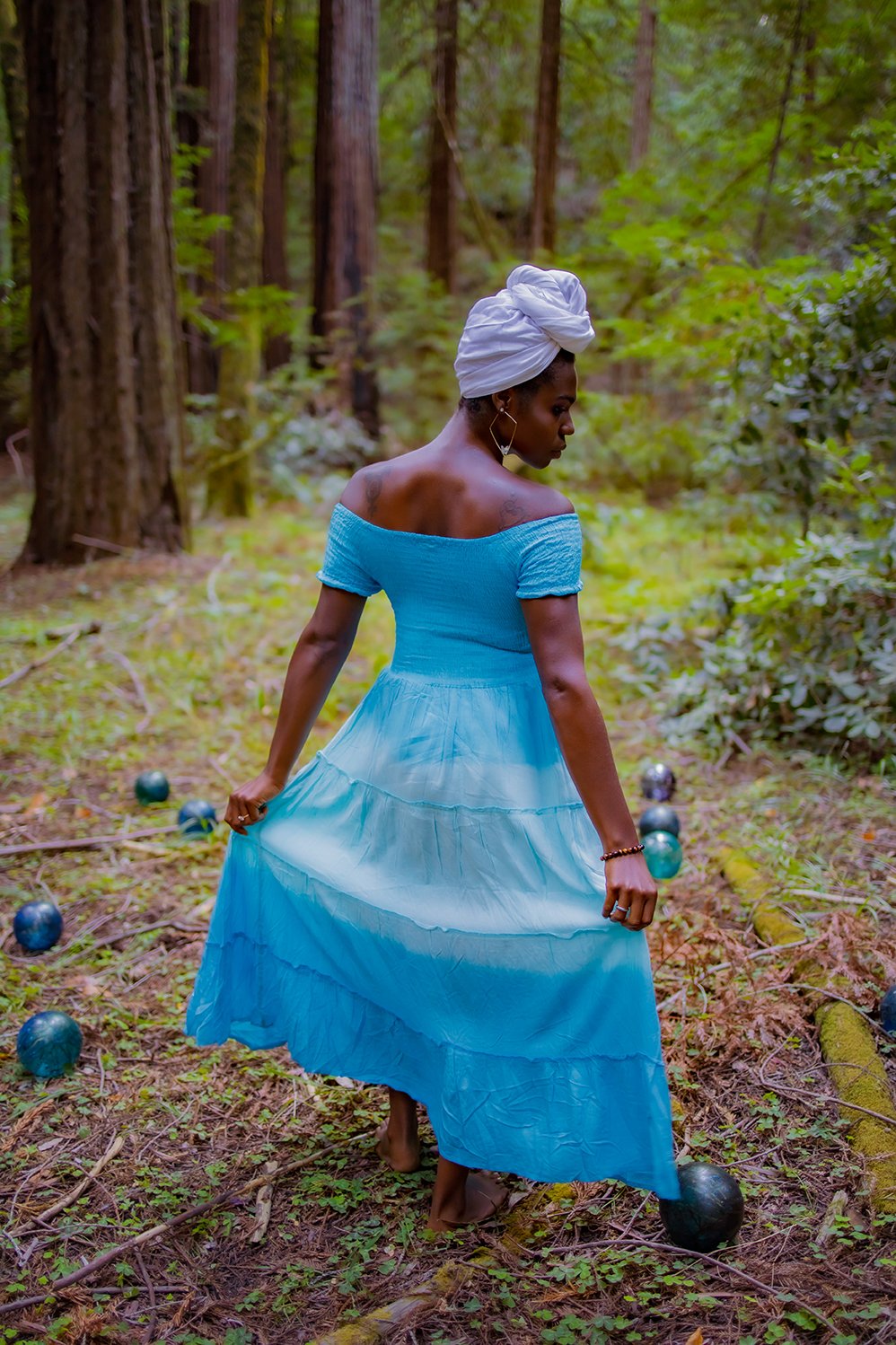Altar of Sowers
Mixed Media Installation
Cotton, seeds: chickpeas, lentils, red beans, soybeans and lima beans, wood, brass, 18 (W) x 18 (L) x 14 (H). Mixed-media sculpture
Seed vaults in Svalbard, Norway and Aleppo, Syria have failed due to 1) permafrost receding/flooding and 2) power loss and war. These projects participate in long-standing tropes of environmental sovereignty, imagining mankind can master nature. Furthermore, the privatization of life engages in necropolitics (who gets to live and die). When mass extinction has occurred, who are the few that will reopen these seed banks? What agency is granted to those outside, waiting to be saved?
Altar of Sowers resists the myth of individual saviorism to reclaim the collective practices of world-saving. The artwork features 88 seed bags stacked on top of a brass altar as an homage to domestic labor, the politics of dispersal and ecological liberation. This work borrows its title from Octavia Butler’s seminal work, The Parable of the Sowers. Her narrative resists the teleology of ecological liberation proposed by contemporary technology and engages with Ursula K. Le Guin’s carrier theory, in which she proposes that the first tool of mankind was not a spear but a bag.
The seed bags are sewn from soft cotton cloth, envisioning how knowledge is swathed and tenderly cared for. Furthermore, the mix of seeds - chickpeas, lentils, red beans, soybeans and lima beans - signify the transnational nature of seed or spore dispersal. I think of my ancestors, who carried their belongings on rickety boats across dark waters. Stacked on top of a brass altar, the seed bags can be disassembled for dissemination or presented as offerings. What conditions created their precarity? Who or what assembled them? Why? In reimagining kinship with the Earth, Altar of Sowers centers rites of community and care in the midst of uncertainty.
Unlike those in a seed bank, my seeds are liberated in their potentialities, illuminating the legacy and labor of seed-carrying that already exist in the world for preserving life.
Process
See the installation and process below:
Echo’s Garden
Mixed Media Sculptures & Collaborate Photoshoot
18 glass spheres (6" x 6"), paint, metallic paper, water, 2020. Interactive photoshoot on Pomo Miwok land
CREDITS
Artist/Art Director: Melissa Wang @melissawangstudio
Photographer/Creative Director: Devin Ariel @devinarielphotography and Emile Deschamps
MUA: Mae Blackmore @maeblackmoreart
Models: Tavy Tornado @tavytornado, Kimmie Barbosa @porqueyounogrowup, Devin Ariel @mahogany_gyal
Echo’s Garden is a call and response to Yayoi Kusama’s Narcissus’s Garden. Gayatri Spivak critiques Echo’s absence from cultural history and attributes this to the broader practice of erasing the Other from Western knowledge systems.
My work speculates on erasure, drawing inspiration from Ovid's Metamorphosis - Echo’s death is marked by her words echoing across a pond. Using paint, water and mirror paper foil, I create opaque and organic permutations, ripple-like patterns discontinuously emerge and re-emerge.
Originally intended as a solo installation, I redesigned Echo’s Garden with a local team of friends and creatives into an interactive art photoshoot.
Echo’s Garden features womxn of color: as both cipher and shorthand for the Other. Beyond fantasies of a post-racial landscape, what alternative ontologies for those thriving in precarity exist? In landscapes that historically deny BIPOC presence (e.g., State Parks), what does it mean to enter and play?
See my interview with Devin Ariel about shooting Echo’s Garden.
Process
See the process below:














